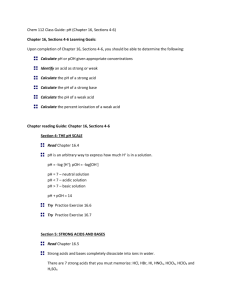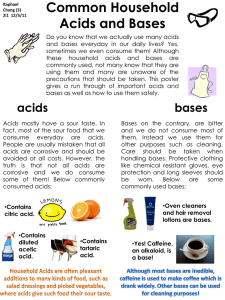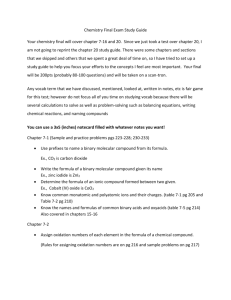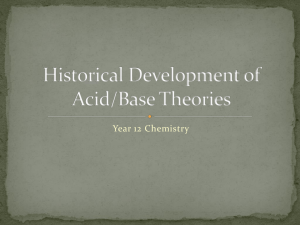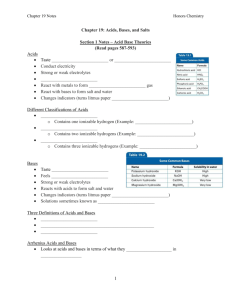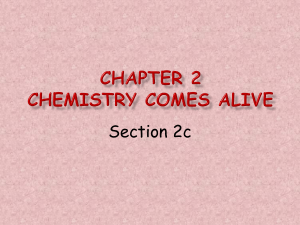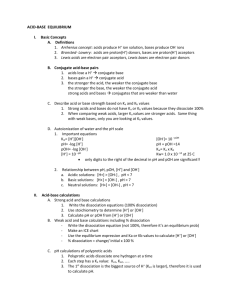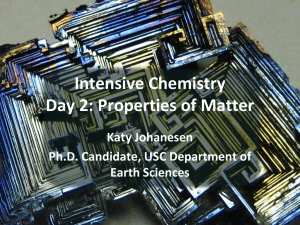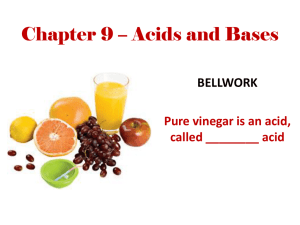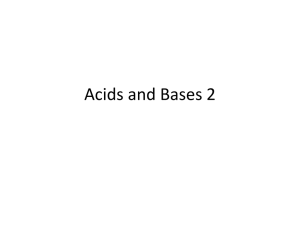Acids and Bases Part 1 - Tri
advertisement
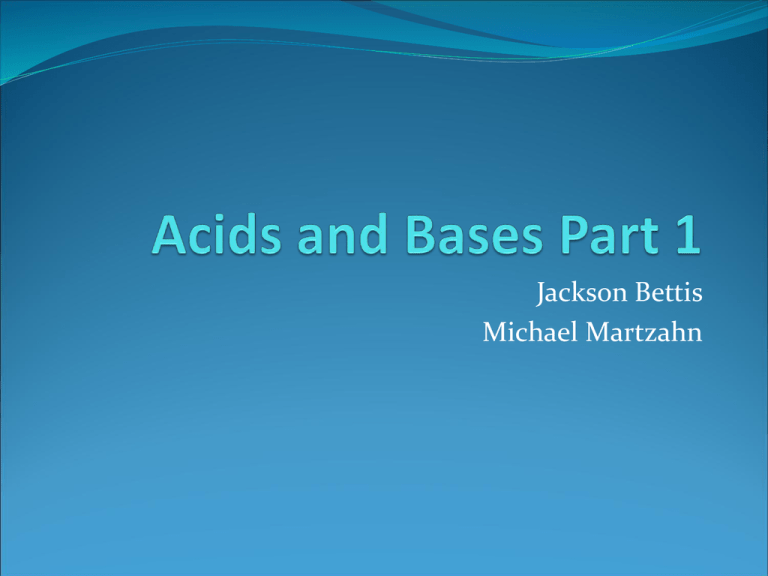
Jackson Bettis Michael Martzahn Definitions Acids are H+ donors. They give up H+ ions (protons) Bases are H+ acceptors. They are compounds that snatch up H+ ions. Conjugate Acids donate protons in the forward chemical reaction Conjugate Bases accept protons in the forward chemical reaction Identification Acids have an H in front usually Acids have a pH of less than 7 Bases have an OH sometimes Bases have a pH of more than 7 Conjugate Bases of strong acids are terrible bases that have no effect on pH Conjugate Bases of weak acids are weak bases and thus do affect pH Identification, cont. Conjugate acids of weak bases are weak acids and do affect pH What it means to be a strong acid Strong Acids dissociate completely in water Therefore, they give up more protons than weak acids The Six Strong Acids HCl HNO3 H2SO4 HClO4 HI HBr Acid dissociation reaction in water H2O <-> H+ + OH Therefore, water can act as a base or an acid Kw Kw = 1.0 * 10-14 Kw / [OH-] = [H+] Kw / [H+] = [OH-] -log[H+] = pH -log[OH-] = pOH pH + pOH = 14 Writing Ka expressions Ka = [H+][A-] / [HA] Kb = [OH-][HB+] / [B] Ka * Kb = Kw Calculating pH For strong acids: -log[H+] For strong bases: -log[OH-] For weak acids or bases: ICE table Calculating pH, cont. 1.) determine major species in solution 2.) Decide which species in the reaction will control [H+] 3.) Set up an ICE table for the reaction to determine [H+] Calculating pH of buffers Ex.) We add 0.05 mols of NaOH to a 500 mL solution of 0.25 M HOCl and 0.20 M NaOCl. Assume no volume change. Sample problem :D Calculate the pH of a 0.20 M solution of HF (Ka = 7.2 * 10-4) Another Sample Problem 20. The ionization constant for acetic acid is 1.8 × 10–5; that for hydrocyanic acid is 4 × 10–10. In 0.1 M solutions of sodium acetate and sodium cyanide, it is true that (a) [H+] equals [OH–] in each solution (b) [H+] exceeds [OH–] in each solution (c) [H+] of the sodium acetate solution is less than that of the sodium cyanide solution (d) [OH–] of the sodium acetate solution is less than that of the sodium cyanide solution (e) [OH–] for the two solutions is the same Yet another sample problem 12. A solution prepared by mixing 10 mL of 1 M HCl and 10 mL of 1.2 M NaOH has a pH of (a) 0 (b) 1 (c) 7 (d) 13 (e) 14

